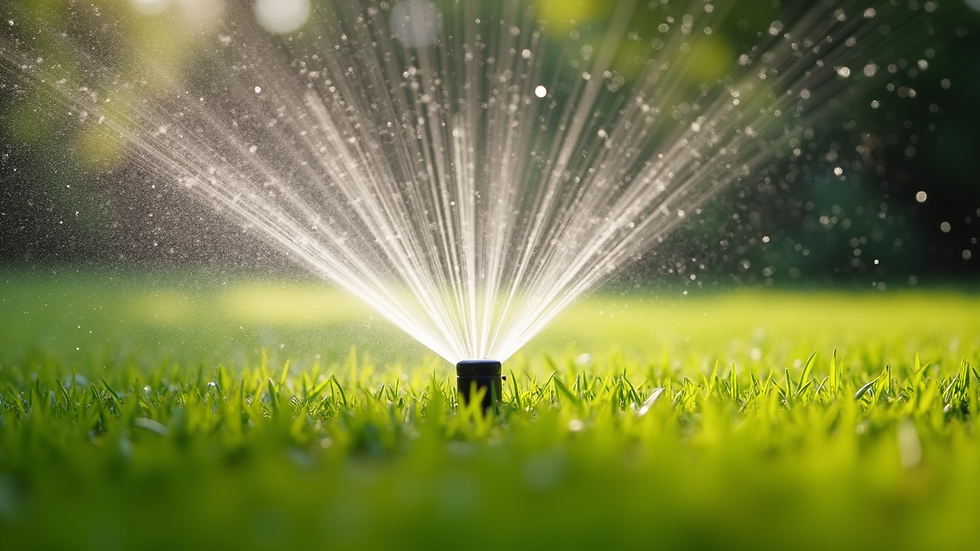Achieve a Pristine Lawn with Precision Lawn Care Tips
- Aniket Kore
- Aug 13
- 4 min read
A lush, green lawn is the pride of any homeowner. It enhances the beauty of your property and provides a relaxing outdoor space. However, achieving and maintaining a pristine lawn requires more than just occasional watering and mowing. It demands a strategic approach that considers soil health, grass type, climate, and proper maintenance techniques. This guide will walk you through essential lawn care tips to help you create a vibrant and healthy lawn all year round.
Essential Lawn Care Tips for a Healthy Lawn
Maintaining a beautiful lawn starts with understanding the basics of lawn care. Here are some fundamental tips that will set you on the right path:
1. Choose the Right Grass Type
Selecting the appropriate grass variety for your region and soil type is crucial. Different grasses thrive in different climates and soil conditions. For example, warm-season grasses like Bermuda and Zoysia are ideal for hot climates, while cool-season grasses such as Kentucky bluegrass and fescue perform better in cooler areas.
2. Proper Mowing Practices
Mowing is more than just cutting grass. It influences the health and appearance of your lawn. Follow these mowing tips:
Mow regularly to avoid cutting more than one-third of the grass blade at a time.
Keep mower blades sharp to ensure clean cuts and prevent grass damage.
Adjust mowing height based on grass type; generally, keep grass between 2.5 to 3.5 inches tall.
Alternate mowing patterns to prevent soil compaction and encourage upright growth.
3. Watering Wisely
Watering is essential but overwatering can harm your lawn. Use these watering guidelines:
Water deeply and infrequently to encourage deep root growth.
Early morning watering reduces evaporation and fungal diseases.
Aim for about 1 inch of water per week, including rainfall.
Use a rain gauge or soil moisture sensor to monitor watering needs.

4. Fertilize Appropriately
Fertilizing provides essential nutrients that grass needs to grow strong and green. Follow these tips:
Test your soil to determine nutrient deficiencies.
Use a balanced fertilizer with nitrogen, phosphorus, and potassium.
Apply fertilizer during the growing season, typically spring and fall.
Avoid over-fertilizing, which can cause excessive growth and environmental harm.
Advanced Lawn Care Tips for Year-Round Beauty
Once you have mastered the basics, consider these advanced tips to elevate your lawn care routine:
1. Aerate Your Lawn
Aeration involves perforating the soil with small holes to allow air, water, and nutrients to penetrate the grass roots. This helps alleviate soil compaction and promotes healthier root systems.
Use a core aerator for best results.
Aerate during the growing season for your grass type.
Follow aeration with overseeding to fill in bare spots.
2. Control Weeds Effectively
Weeds compete with grass for nutrients and water. Managing them is essential for a pristine lawn.
Apply pre-emergent herbicides in early spring to prevent weed seeds from germinating.
Use post-emergent herbicides to target existing weeds.
Maintain a thick, healthy lawn to naturally crowd out weeds.
3. Manage Lawn Diseases and Pests
Regularly inspect your lawn for signs of disease or pest damage. Early detection allows for timely treatment.
Identify common lawn diseases such as brown patch or dollar spot.
Use fungicides and insecticides as needed, following label instructions.
Encourage beneficial insects and natural predators.

4. Practice Precision Lawn Care
For the best results, consider adopting precision lawn care techniques. This approach uses technology and data to tailor lawn maintenance to the specific needs of your yard. It includes soil testing, targeted fertilization, and smart irrigation systems that conserve water while promoting optimal growth.
Seasonal Lawn Care Tips to Keep Your Lawn Vibrant
Lawn care needs change with the seasons. Here’s how to adjust your routine throughout the year:
Spring
Rake to remove debris and dead grass.
Aerate and overseed to repair winter damage.
Apply a balanced fertilizer to encourage growth.
Begin regular mowing as grass starts growing.
Summer
Water deeply but less frequently.
Raise mowing height to reduce stress on grass.
Monitor for pests and diseases.
Avoid heavy foot traffic during hot, dry periods.
Autumn
Continue mowing until grass stops growing.
Apply a high-potassium fertilizer to strengthen roots.
Overseed thin or bare areas.
Rake leaves regularly to prevent smothering.
Winter
Minimize lawn traffic to avoid soil compaction.
Clear debris to prevent mold and disease.
Plan for spring lawn care activities.

Tips for Sustainable and Eco-Friendly Lawn Care
Caring for your lawn responsibly benefits both your yard and the environment. Here are some sustainable practices:
Use organic fertilizers and compost to enrich soil naturally.
Install rain barrels to collect water for irrigation.
Choose drought-resistant grass varieties to reduce water use.
Avoid chemical pesticides and herbicides when possible.
Mulch grass clippings to return nutrients to the soil.
By integrating these eco-friendly methods, you can maintain a beautiful lawn while reducing your environmental footprint.
Achieving a pristine lawn requires dedication, knowledge, and the right techniques. By following these lawn care tips and embracing modern methods like precision lawn care, you can enjoy a vibrant, healthy lawn that enhances your outdoor living space throughout the year. Start today and watch your lawn transform into a lush green paradise.




Comments